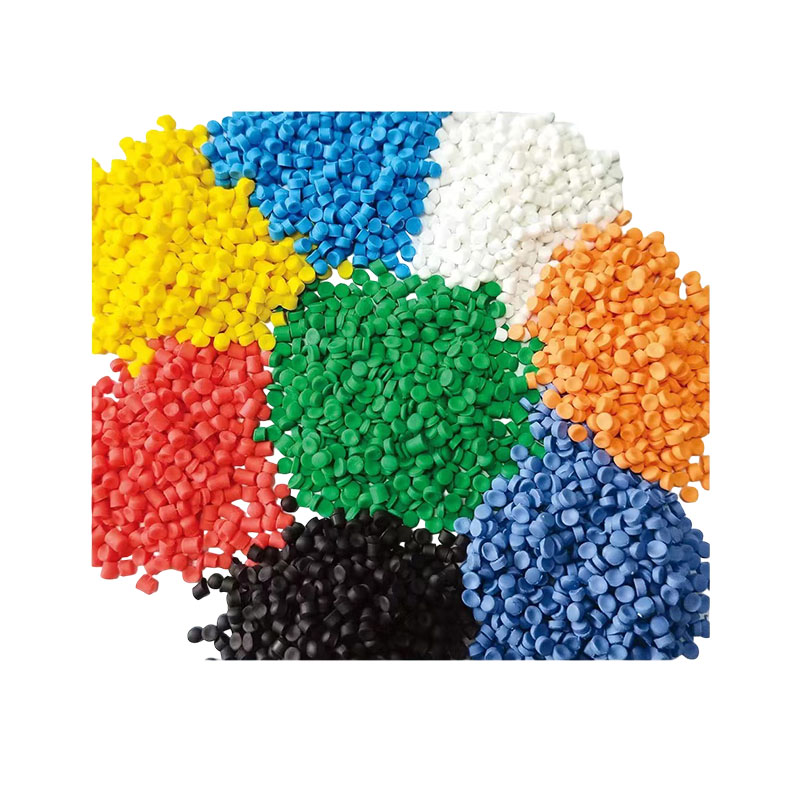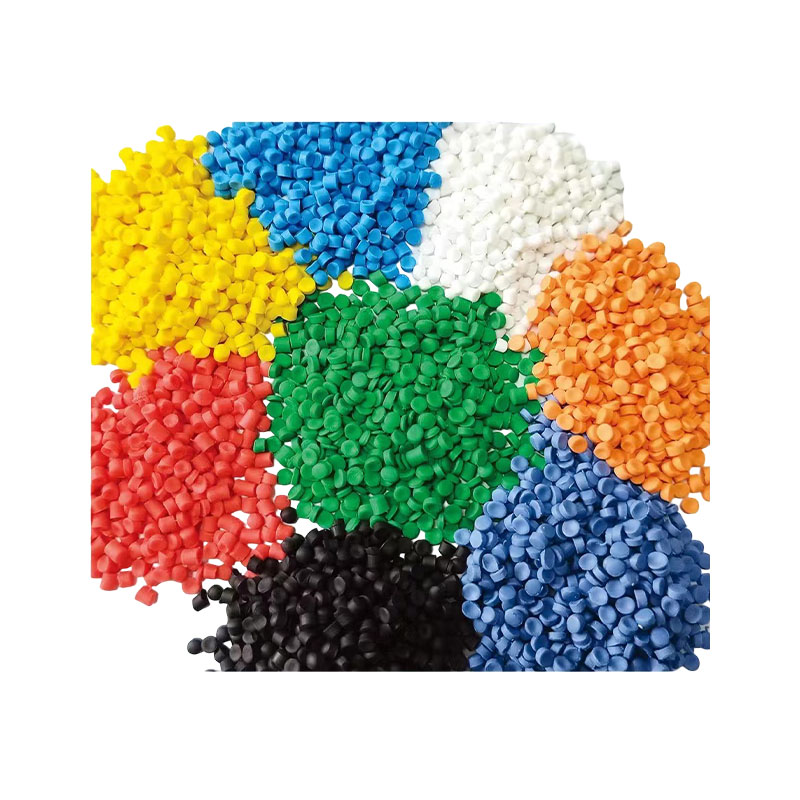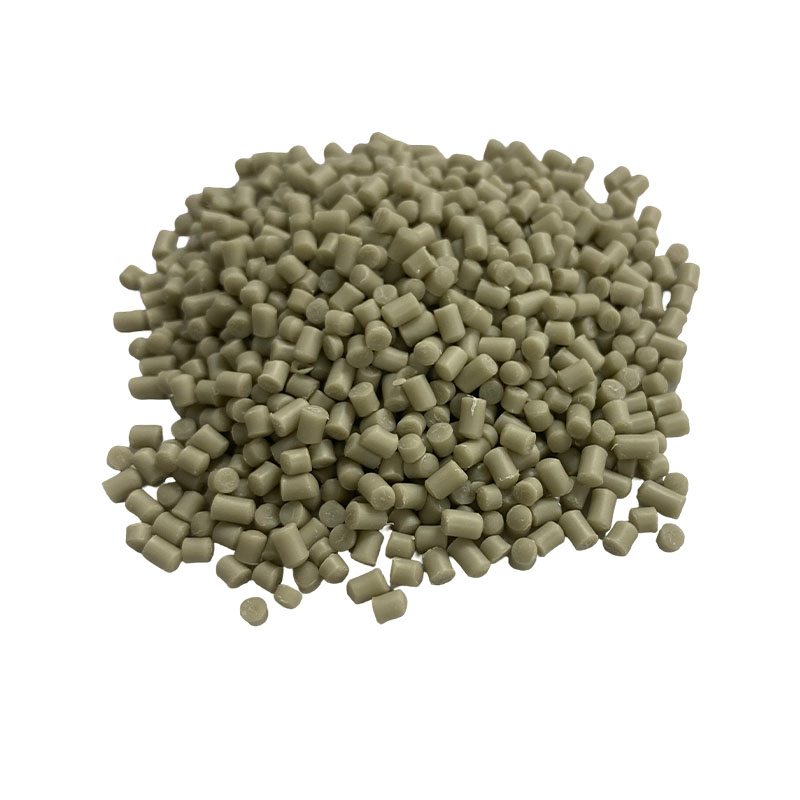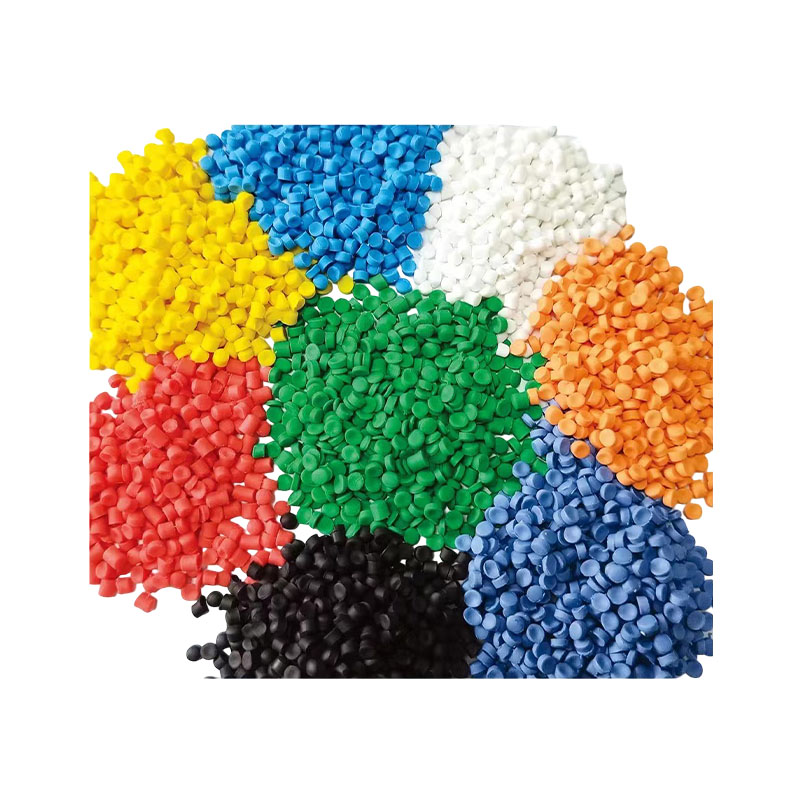How does vitrified polyolefin cable material form a dense, infusible ceramic protective layer under flames of 550-1800°C?
Release Time : 2025-08-15
In modern buildings and public safety systems, cables serve as the "lifeline" for power and information transmission. Their fire resistance is directly related to the evacuation of personnel and the safety of property in the event of a fire. Vitrified polyolefin cable material, a revolutionary material in the field of fire-resistant wire and cable, redefines the safety boundaries of cables with its miraculous ability to "reborn from the ashes" in flames. It not only possesses the environmental advantages of traditional low-smoke, halogen-free materials, but also demonstrates the extraordinary wisdom of materials science and the unwavering power of life protection in its aesthetic and novelty.
This "beauty" is not a traditional visual art, but rather a beauty of industrial quality derived from inherently stable performance and sophisticated processing. Under normal conditions, vitrified polyolefin cable material appears as uniform, fine particles or powder, pure in color, and free of impurities. After thorough mixing and compression in an internal mixer, followed by high-temperature plasticization and uniform extrusion in a twin-screw extruder, its components are highly dispersed, ensuring highly consistent material properties and batch stability. This "inner beauty," ensured by advanced processing techniques, results in a smooth, dense surface, bubble-free, and defect-free insulation and sheathing of the final cable, exuding a professional and reliable industrial aesthetic. When installed in building pipelines, the cable's sleek appearance and reliable performance together form an "invisible safety net" for modern infrastructure.
The core of its "novelty" lies in its revolutionary fire-resistant mechanism, vitrified polyolefin cable material. While ordinary cables quickly melt and drip in a fire, even fueling the flames, vitrified polyolefin cable material exhibits a distinctly different "resilience." Under extreme flames of 550°C to 1800°C, the special inorganic fillers within the material undergo a complex physical and chemical reaction with the organic matrix, rapidly "ceramizing" the material to form a hard, complete, and dense ceramic-like outer shell. This outer shell acts as an indestructible "fire wall" for the conductors within. It resists melting and dripping, effectively insulating against flames and high temperatures, protecting the internal wiring and maintaining power during critical fire periods (e.g., 90 minutes, 120 minutes, or even longer). This ensures the normal operation of critical facilities like emergency lighting, fire elevators, and alarm systems, buying precious time for escape and firefighting. This "self-protection" capability, reborn from destruction, is the fundamental source of its novel value.
Its novelty also lies in its superior overall performance and broad standard compatibility. Beyond its core ceramic fire-resistant properties, it retains all the advantages of low-smoke, halogen-free materials: extremely low smoke generation during combustion, and non-toxic and non-corrosive gases released, preventing secondary damage. It is particularly suitable for crowded public places, subways, tunnels, hospitals, and other areas. Its mechanical and electrical properties fully meet high standards under normal conditions. The product line covers all material requirements, from insulation to sheathing, and is widely applicable to various fire-resistant building pipelines. Its performance strictly complies with authoritative domestic and international fire-resistant cable standards such as GB/T 19666 and BS 6387, providing a solid foundation for product design and engineering acceptance.
From a practical perspective, the novelty of vitrified polyolefin cable material lies in its revolutionary improvement in building safety. It transforms passive fire protection into active protection, fundamentally resolving the pain points of traditional fire-resistant cables that rely on materials like mica tape and are prone to cracking and failure under flame impact. Its excellent vitrification properties create a hard and structurally sound shell that effectively withstands water spray and meets more stringent testing requirements, such as the Fire Resistance Plus Spray (CWZ) test.
In short, vitrified polyolefin cable material, with its inherent aesthetic qualities of uniform processing and stable performance, and its novel mechanism of forming a dense ceramic shell in flames for efficient thermal insulation and fire protection, has become an indispensable key material for modern safe buildings. Its aesthetics lie in its reliable quality and exquisite craftsmanship; its novelty lies in its use of material intelligence to protect passageways from devastating fires. Although it is just an outer layer of the cable, at critical moments, it transforms into an indestructible "fireproof armor", silently guarding the safety of the city and the peace of people. It is the most solid promise that technology has given to life.
This "beauty" is not a traditional visual art, but rather a beauty of industrial quality derived from inherently stable performance and sophisticated processing. Under normal conditions, vitrified polyolefin cable material appears as uniform, fine particles or powder, pure in color, and free of impurities. After thorough mixing and compression in an internal mixer, followed by high-temperature plasticization and uniform extrusion in a twin-screw extruder, its components are highly dispersed, ensuring highly consistent material properties and batch stability. This "inner beauty," ensured by advanced processing techniques, results in a smooth, dense surface, bubble-free, and defect-free insulation and sheathing of the final cable, exuding a professional and reliable industrial aesthetic. When installed in building pipelines, the cable's sleek appearance and reliable performance together form an "invisible safety net" for modern infrastructure.
The core of its "novelty" lies in its revolutionary fire-resistant mechanism, vitrified polyolefin cable material. While ordinary cables quickly melt and drip in a fire, even fueling the flames, vitrified polyolefin cable material exhibits a distinctly different "resilience." Under extreme flames of 550°C to 1800°C, the special inorganic fillers within the material undergo a complex physical and chemical reaction with the organic matrix, rapidly "ceramizing" the material to form a hard, complete, and dense ceramic-like outer shell. This outer shell acts as an indestructible "fire wall" for the conductors within. It resists melting and dripping, effectively insulating against flames and high temperatures, protecting the internal wiring and maintaining power during critical fire periods (e.g., 90 minutes, 120 minutes, or even longer). This ensures the normal operation of critical facilities like emergency lighting, fire elevators, and alarm systems, buying precious time for escape and firefighting. This "self-protection" capability, reborn from destruction, is the fundamental source of its novel value.
Its novelty also lies in its superior overall performance and broad standard compatibility. Beyond its core ceramic fire-resistant properties, it retains all the advantages of low-smoke, halogen-free materials: extremely low smoke generation during combustion, and non-toxic and non-corrosive gases released, preventing secondary damage. It is particularly suitable for crowded public places, subways, tunnels, hospitals, and other areas. Its mechanical and electrical properties fully meet high standards under normal conditions. The product line covers all material requirements, from insulation to sheathing, and is widely applicable to various fire-resistant building pipelines. Its performance strictly complies with authoritative domestic and international fire-resistant cable standards such as GB/T 19666 and BS 6387, providing a solid foundation for product design and engineering acceptance.
From a practical perspective, the novelty of vitrified polyolefin cable material lies in its revolutionary improvement in building safety. It transforms passive fire protection into active protection, fundamentally resolving the pain points of traditional fire-resistant cables that rely on materials like mica tape and are prone to cracking and failure under flame impact. Its excellent vitrification properties create a hard and structurally sound shell that effectively withstands water spray and meets more stringent testing requirements, such as the Fire Resistance Plus Spray (CWZ) test.
In short, vitrified polyolefin cable material, with its inherent aesthetic qualities of uniform processing and stable performance, and its novel mechanism of forming a dense ceramic shell in flames for efficient thermal insulation and fire protection, has become an indispensable key material for modern safe buildings. Its aesthetics lie in its reliable quality and exquisite craftsmanship; its novelty lies in its use of material intelligence to protect passageways from devastating fires. Although it is just an outer layer of the cable, at critical moments, it transforms into an indestructible "fireproof armor", silently guarding the safety of the city and the peace of people. It is the most solid promise that technology has given to life.







